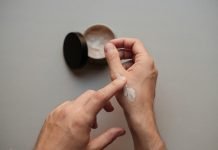
In a new Doctoral thesis from the University of Gothenburg, researchers found that inability to stand on one leg for more than a few seconds is a risk factor for fracture in older women. Moreover, the widely used antidepressant drug SSRIs may lead to poor physical function.
Osteoporosis (bone fragility), with its associated fractures, is a growing public health problem that causes suffering and heavy costs in health care.
The new study aims to predict osteoporosis and fractures in older women.
In the current study, the team examined the data concerning 3,028 women aged 75–80 years, from the SUPERB (Sahlgrenska University Hospital Prospective Evaluation of the Risk of Bone fracture) study at Sahlgrenska University Hospital’s Mölndal site.
After being examined in the period 2013–16, the participants were monitored in health data registers.
Fracture risks were studied in terms of physical function, using two established testing methods: the One Leg Standing Test (OLST) and Timed Up and Go (TUG).
OLST involves timing how long a person can stand on one leg, while TUG measures the time it takes to rise from a seated position, walk three meters, turn, and then sit down again.
The researchers found that in a woman with a low OLST score, who was unable to stand on one leg for ten seconds, the risk of hip fracture within four years was found to be more than three times higher (a factor of 3.02) than in a woman who was able to stand on one leg for 10–15 seconds.
With a high TUG result, if it took 12 seconds or more to get up, walk, and sit down again, the probability of hip fracture was almost threefold (a factor of 2.96).
What’s more, physical function and bone properties were examined in women medicated with two very common drug groups: SSRIs (selective serotonin reuptake inhibitors, used to treat depression) , and lipid-lowering statins (used to treat high blood cholesterol).
The statins proved to be linked to improved properties in cortical bone, the hard outer surface layer of various parts of the skeleton, measured with two different imaging methods.
For SSRI users, there was no demonstrable effect on bone microstructure or the dimensions of skeletal parts, but a link between SSRIs and inferior physical function in terms of grip strength, walking speed, and standing up from a chair, as well as an elevated risk of falling, were found.
The findings suggest that TUG and OLST are so clearly connected with fracture risks that including them in annual checks in primary care should be considered.
If you care about bone health, please read studies that for stronger bones, diets trumps exercise, and this bone problem may strongly increase COVID-19 death risk.
For more information about health, please see recent studies that too much of this vitamin may increase your risk of bone fractures, and results showing this type of exercise may protect your bone health, slow down bone aging.
The study was conducted by Larsson, Berit.




